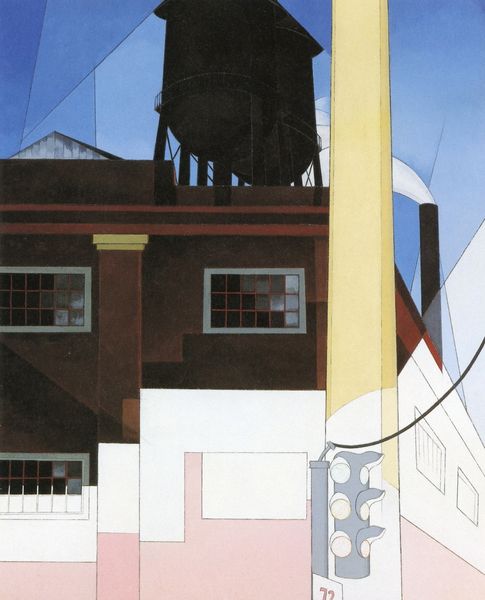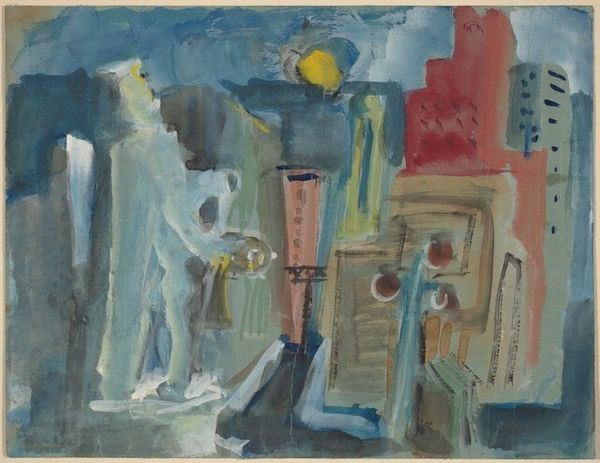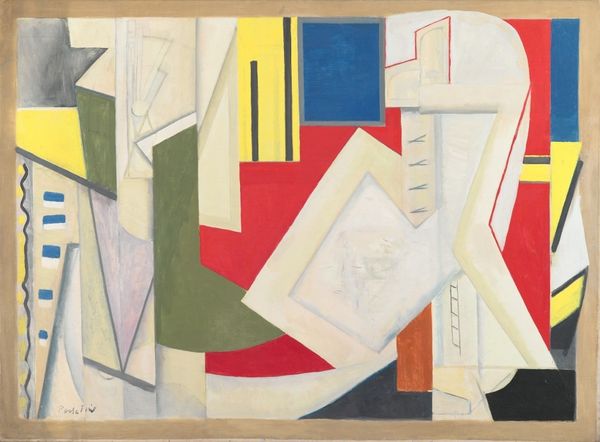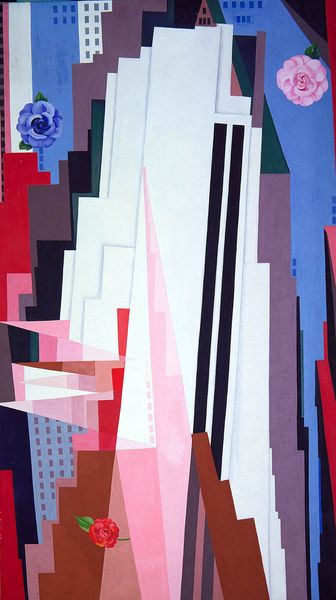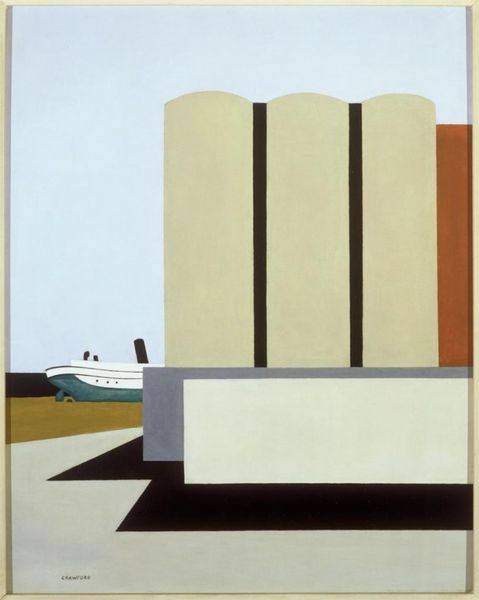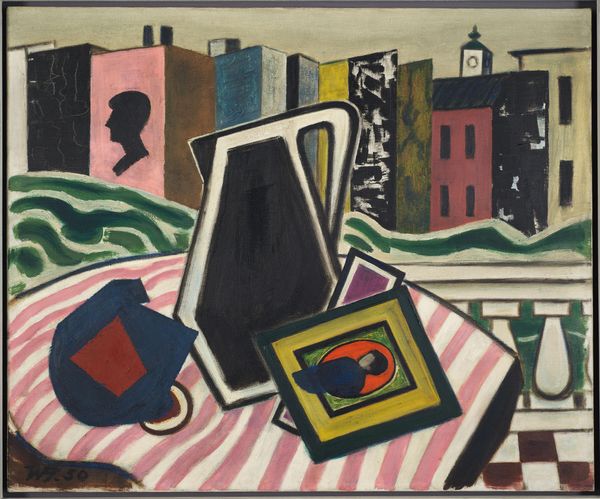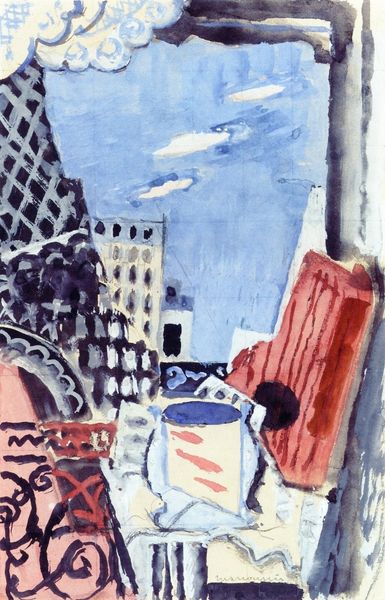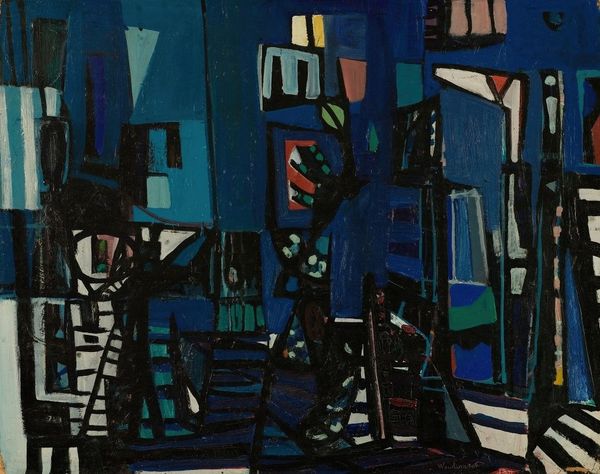
painting, acrylic-paint
#
precisionism
#
public art
#
painting
#
acrylic-paint
#
geometric
#
line
#
cityscape
#
modernism
Copyright: Public domain
Curator: Charles Demuth's 1920 work, "End of the Parade, Coatesville, Pa.," immediately strikes you with its verticality. Editor: Absolutely, the forceful thrust of those stark chimneys dominates the composition. There's a rigidity that mirrors the industrial subject matter. Curator: Indeed. Demuth was drawn to the geometric forms found within the industrial landscape. Acrylic paint on board helps him highlight this with sharp lines. Note the precise rendering; it’s part of what identifies the painting within the Precisionist style. Editor: These geometric forms really impose themselves upon the scene. They feel both grounded and slightly abstracted. The palette is also really restrained. What interests me is how he seems to equate beauty and industry; is this purely representational or is there some element of commentary? Curator: Considering Coatesville's role as a steel production center, there's a reading to be made on the industrial boom. In effect, Demuth documents a landscape reshaped by industry. It focuses attention on the labor conditions, on how it directly transforms communities and redefines notions of "American progress." Editor: Yes, these stark chimney stacks almost read like monuments, imposing forms against a somewhat muted background. What's also interesting is how he manages to hint at depth and space, despite the painting's very flat, almost graphic quality. Curator: And this very ambiguity perhaps allows us, even today, to debate both the progress and costs tied up in those very modern forms, a fitting epitaph, perhaps. Editor: Indeed. Demuth has captured more than a scene, he's distilled the complex visual rhythm and structural essence of a modernizing America. It leaves us plenty to consider, then and now.
Comments
No comments
Be the first to comment and join the conversation on the ultimate creative platform.
